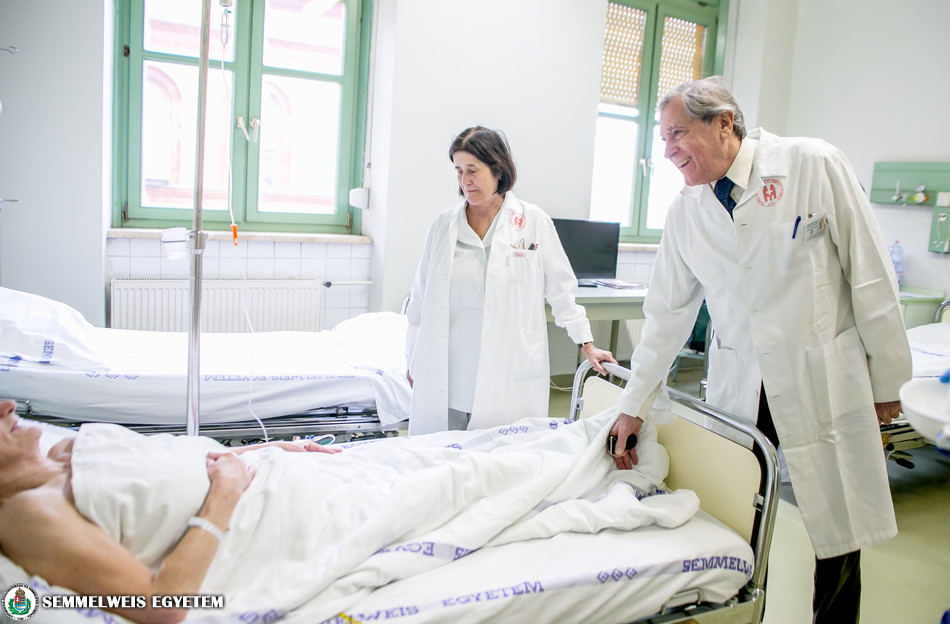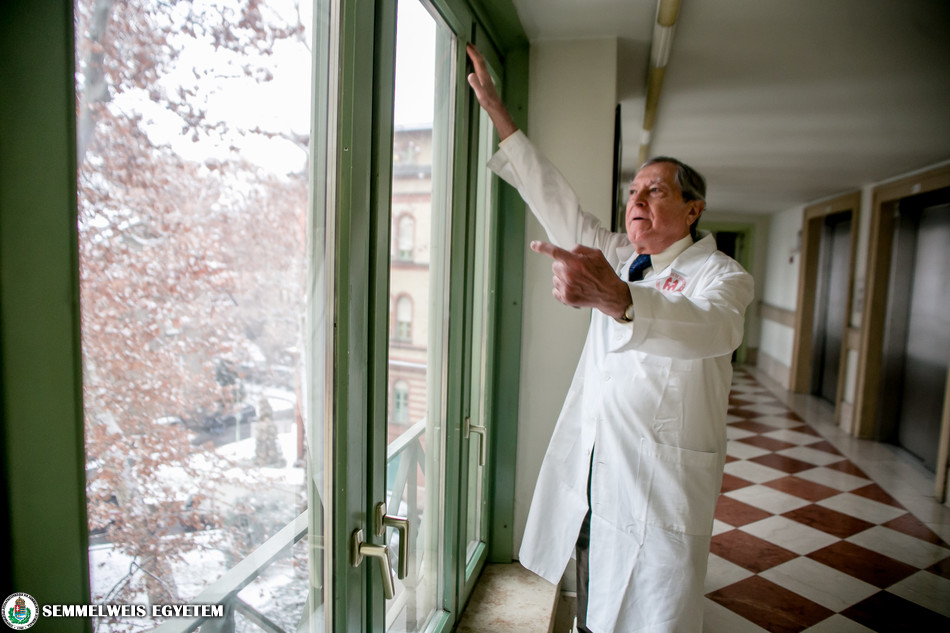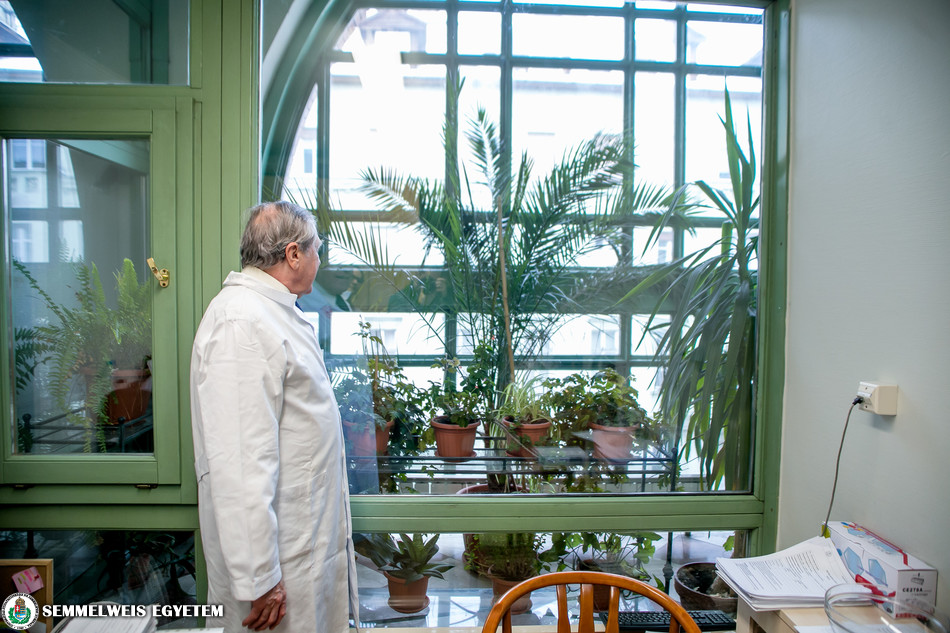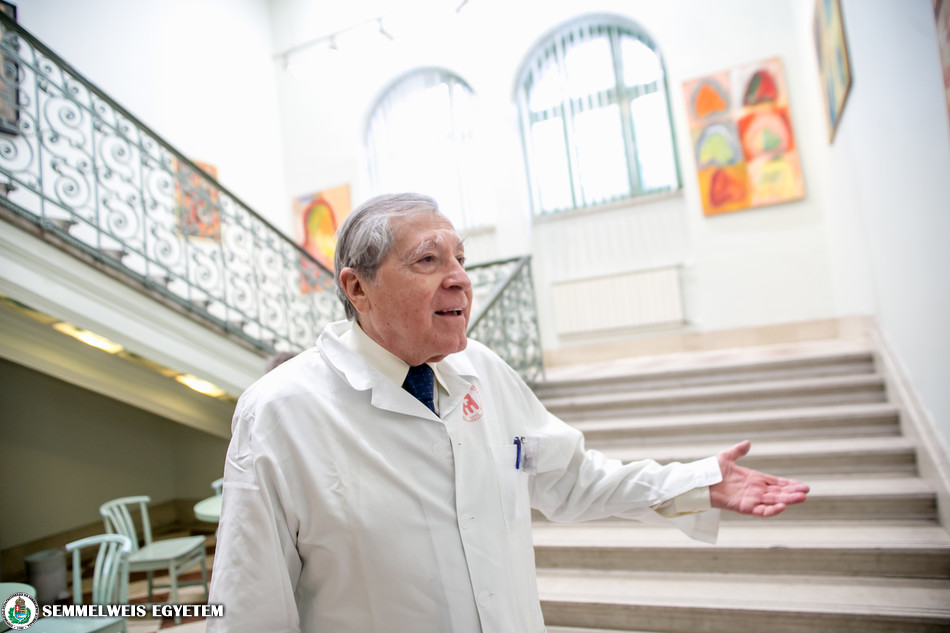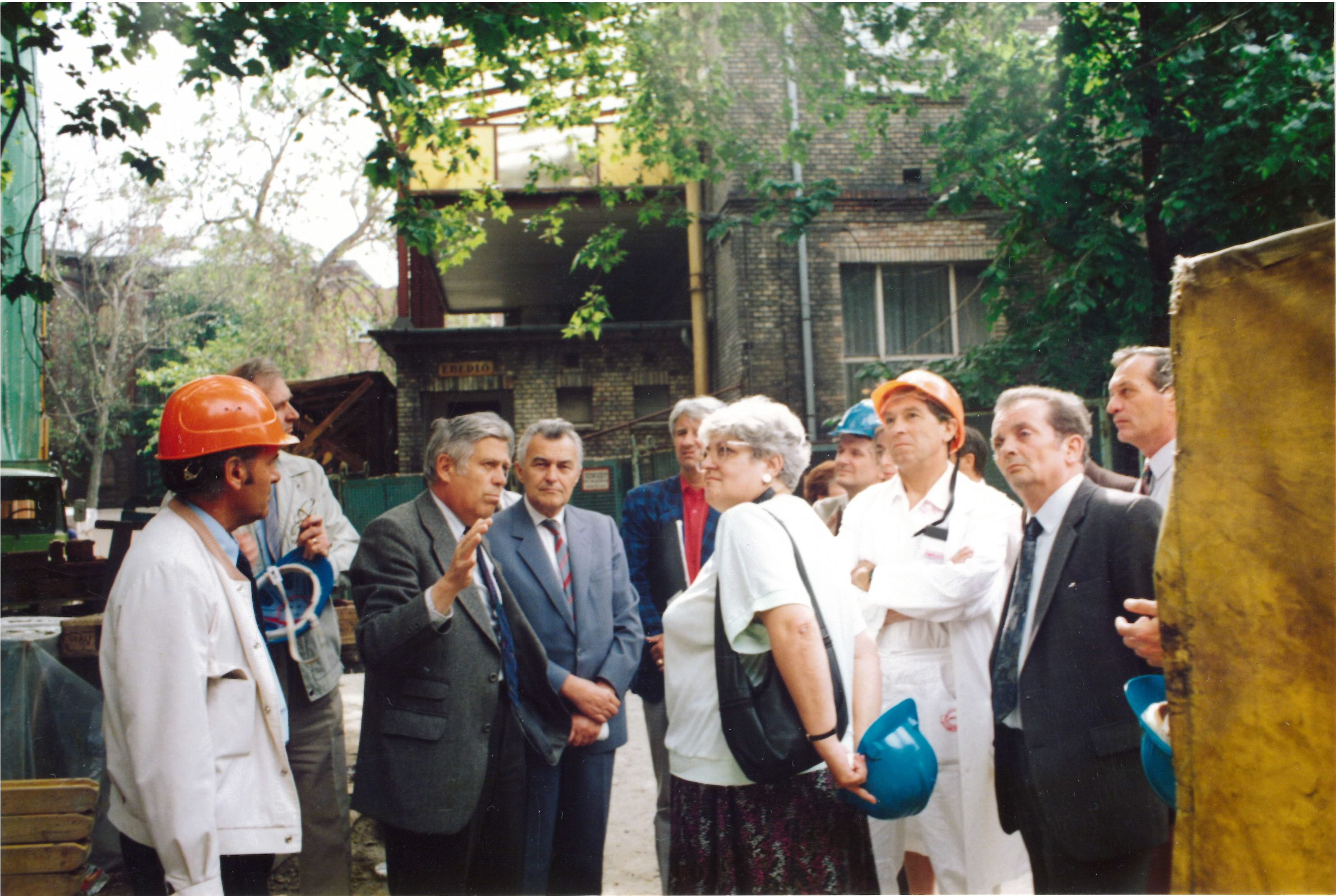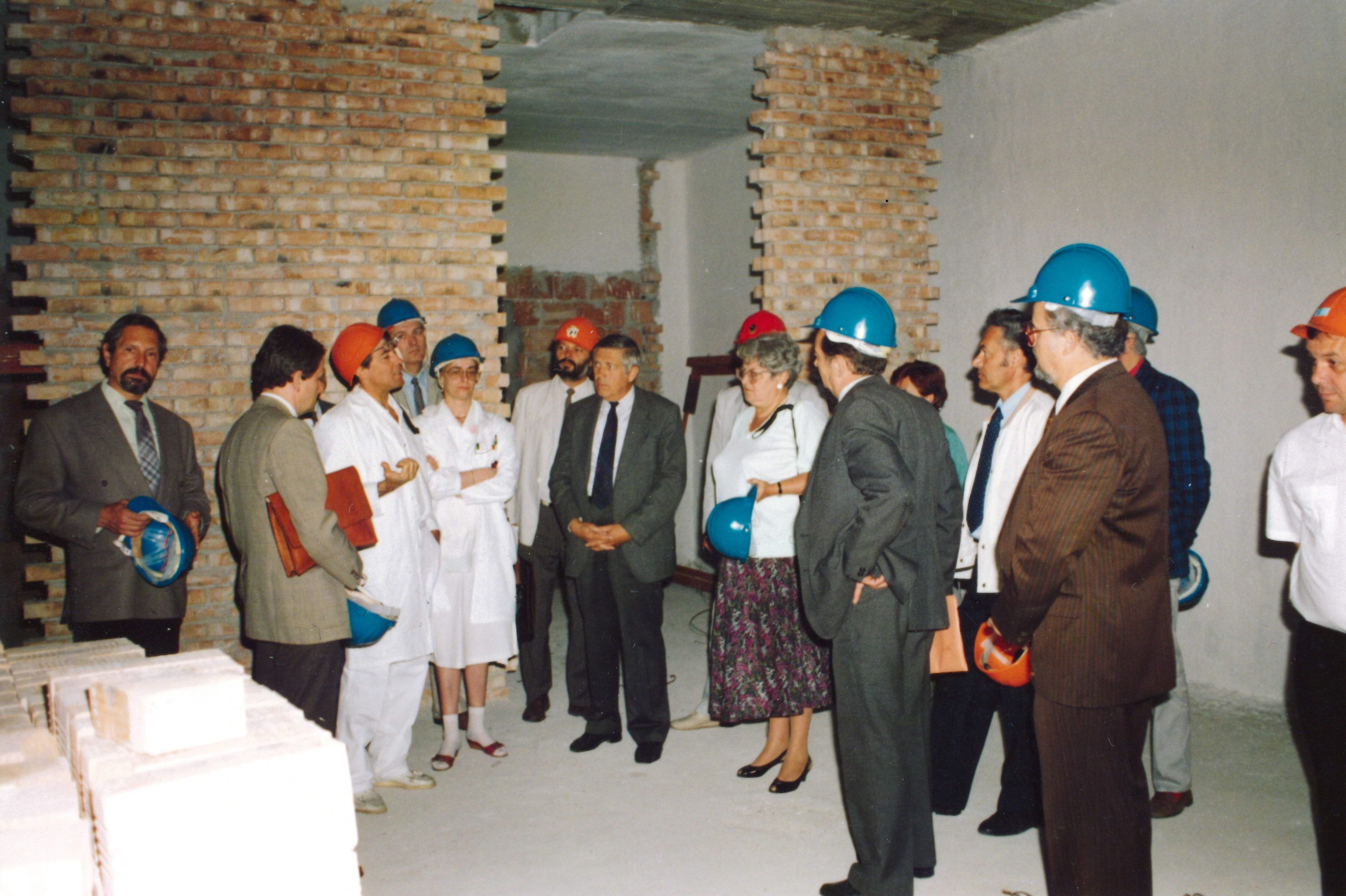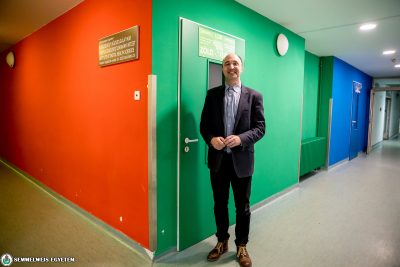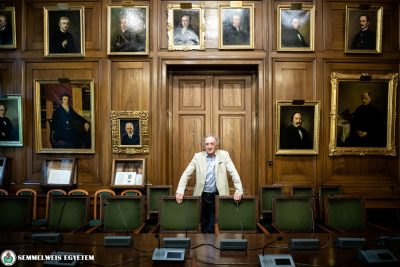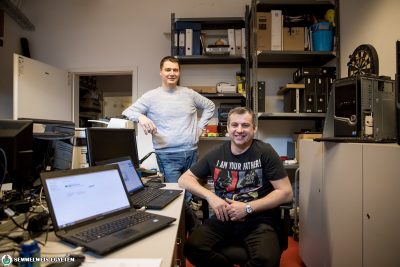Dr. Ferenc Perner started his studies at the Medical University of Budapest in 1956 and has spent his working days here ever since, apart from periods spent abroad. He found it difficult to name one out of the many places at the Department of Transplantation and Surgery he is attached to, so he chose the operating theatres and the lecture hall. Dr. Ferenc Perner, a pioneer of the transplantation programme in Hungary and the founder of the Department of Transplantation and Surgery considers the institution his second home. As a ministerial commissioner, he supervised the renovation of the Department’s building, therefore he knows every nook and cranny as well as the secret stories behind its walls and windows.
“The lecture hall was originally used as an operating theatre in the first couple decades of the 20th century and live surgical demonstrations were held here until 1959. Over the course of the renovation it was divided into two stories thus creating space for offices and medical studios. The facade of the Department is an architectural spectacle with two statues guarding its enormous arched window, which used to serve as lighting for the operating tables.”, he said.
During the 7 years of renovation several challenges had to be overcome, such as demolishing and rebuilding the third floor that had originally been added to the building after World War II. The Department’s building was built between 1900 and 1902, when underground water broke in, creating a long lasting problem. Originally, the damp area was covered with 7 metres of concrete as a temporary solution, but the problem has not been eliminated even with the use of modern insulation technologies. The result of the renovation is a beautiful, majestic and fully functional building that is a true staple of the 250-year-old Semmelweis University.
Eszter Keresztes
Photo: Attila Kovács – Semmelweis University
Translation: Ágnes Raubinek
In our article series entitled “My University”, we ask university citizens to show their favorite university location, and discuss its importance to them. These articles are a part of the celebration of Semmelweis University’s 250th anniversary year.
